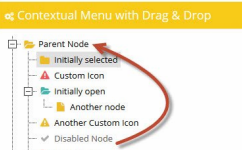下面将这些图像的资源ID都保存在int数组中,代码如下:
代码
private int[] resIds = new int[]
{ R.drawable.item1, R.drawable.item2, R.drawable.item3,
R.drawable.item4, R.drawable.item5, R.drawable.item6,
R.drawable.item7, R.drawable.item8, R.drawable.item9,
R.drawable.item10, R.drawable.item11, R.drawable.item12,
R.drawable.item13, R.drawable.item14, R.drawable.item15 };
在本例的main.xml文件中配置了一个Gallery组件,代码如下:
代码
<?xml version="1.0" encoding="utf-8"?>
<LinearLayout xmlns:android="http://schemas.android.com/apk/res/android"
android:orientation="vertical" android:layout_width="fill_parent"
android:layout_height="fill_parent">
<Gallery android:id="@+id/gallery" android:layout_width="fill_parent"
android:layout_height="wrap_content" android:layout_marginTop="30dp" />
</LinearLayout>
现在在onCreate方法中装载这个组件,代码如下:
代码
public void onCreate(Bundle savedInstanceState)
{
super.onCreate(savedInstanceState);
setContentView(R.layout.main);
// 装载Gallery组件
Gallery gallery = (Gallery) findViewById(R.id.gallery);
// 创建用于描述图像数据的ImageAdapter对象
ImageAdapter imageAdapter = new ImageAdapter(this);
// 设置Gallery组件的Adapter对象
gallery.setAdapter(imageAdapter);
}
在上面的代码中涉及到一个非常重要的类:ImageAdapter。该类是android.widget.BaseAdapter的子类,用于描述图像信息。下面先看一下这个类的完整代码。
代码
public class ImageAdapter extends BaseAdapter
{
int mGalleryItemBackground;
private Context mContext;
public ImageAdapter(Context context)
{
mContext = context;
// 获得Gallery组件的属性
TypedArray typedArray = obtainStyledAttributes(R.styleable.Gallery);
mGalleryItemBackground = typedArray.getResourceId(
R.styleable.Gallery_android_galleryItemBackground, 0);
}
// 返回图像总数
public int getCount()
{
return resIds.length;
}
public Object getItem(int position)
{
return position;
}
public long getItemId(int position)
{
return position;
}
// 返回具体位置的ImageView对象
public View getView(int position, View convertView, ViewGroup parent)
{
ImageView imageView = new ImageView(mContext);
// 设置当前图像的图像(position为当前图像列表的位置)
imageView.setImageResource(resIds[position]);
imageView.setScaleType(ImageView.ScaleType.FIT_XY);
imageView.setLayoutParams(new Gallery.LayoutParams(163, 106));
// 设置Gallery组件的背景风格
imageView.setBackgroundResource(mGalleryItemBackground);
return imageView;
}
}
在编写ImageAdapter类时应注意的两点:
1. 在ImageAdapter类的构造方法中获得了Gallery组件的属性信息。这些信息被定义在res\values\attrs.xml文件中,代码如下:
<?xml version="1.0" encoding="utf-8"?>
<resources>
<declare-styleable name="Gallery">
<attr name="android:galleryItemBackground" />
</declare-styleable>
</resources>
上面的属性信息用于设置Gallery的背景风格。
2. 在ImageAdapter类中有两个非常重要的方法:getCount和getView。其中getCount方法用于返回图像总数,要注意的是,这个总数不能大于图像的实际数(可以小于图像的实际数),否则会抛出越界异常。当Gallery组件要显示某一个图像时,就会调用getView方法,并将当前的图像索引(position参数)传入该方法。一般getView方法用于返回每一个显示图像的组件(ImageView对象)。从这一点可以看出,Gallery组件是即时显示图像的,而不是一下将所有的图像都显示出来。在getView方法中除了创建了ImageView对象,还用从resIds数组中获得了相应的图像资源ID来设置在ImageView中显示的图像。最后还设置了Gallery组件的背景显示风格。
OK,现在来运行这个程序,来回拖动图像列表,就会看到如图1和图2所示的效果了。
本文导航
- 第1页: 首页
- 第2页: 这些图像的资源ID都保存在int数组中
- 第3页: 循环显示图像的原理
- 第4页: 实现循环显示图像的Gallery组件
- 第5页: 本例中Main类的完整代码


 喜欢
喜欢  顶
顶 难过
难过 囧
囧 围观
围观 无聊
无聊



